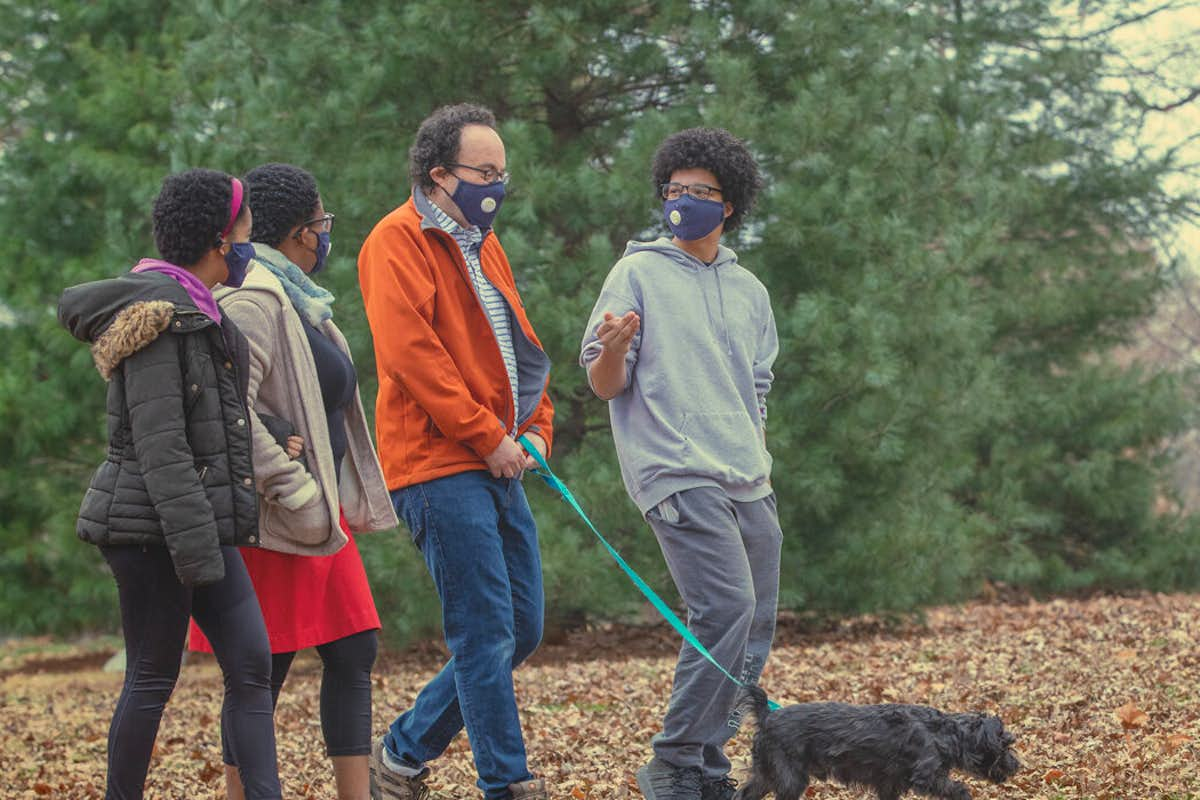Life in the time of COVID
Snapshots of how one WashU family lived, worked and thrived in a year that threw us all off balance

In 2020, so much about what we know to be normal came to a grinding halt for the Washington University in St. Louis community. One week in March, we’re looking ahead to a spring “break,” and then suddenly it’s a hiatus turned into a couple of months that’s turned into a way of life. A sea change, that no one really saw coming. Yet the work of the university went on — and goes on as the pandemic spills into 2021. How? Because of all of us.
The tiny little virus that is COVID-19 has done a lot to humanity pathologically, but it’s also laid bare who we are psychologically. It’s revealed who we are and what’s important. It’s revealed the strength and importance of connection, and while those connections are now masked up and physically distant, or at the mercy of wires and computer code, we as a university have proven that we are strong and resilient and irrepressible. We are persevering. We are showing up. We are doing both the work before us and the work of our lives simultaneously, keeping it together from the Danforth and Medical campuses to satellite “offices” all over the metropolitan St. Louis region.
Here’s how, through the eyes of one remarkable family and snapshots of a few others. We’re managing these COVID times. And we might even be better when it’s all over.
A family of physicists
On the east end of Clayton lives a WashU family of four in a two-story house on a tree-lined street, just over a mile from the western edge of the Danforth Campus.
But this is the time of COVID-19, where distance feels immeasurable and time seemingly repeats itself. That can be trying for a family of physicists, whose life’s work is the never-ending quest for how, and why.
Which is why for the better part of the past 11 months, the Nussinov Family, including Zohar Nussinov, professor of physics in Arts & Sciences and an expert in condensed matter physics; his wife Tsitsi Madziwa Nussinov, who teaches undergraduate classes in electrical & systems engineering in the McKelvey School of Engineering; their son Ethan, 17, a senior at Clayton High School; and daughter Maya, 13, an 8th grader at Wydown Middle School, have led four lives under one roof. Yet they carry on as best they can, living, laughing and loving together in the most trying of circumstances in a time with no clear end in sight.
How are they doing it?
“We figured early on, let’s do one thing and stick with it,” says Tsitsi, a native of Zimbabwe who came to WashU with the kids in 2007, after finishing up work at the Los Alamos National Laboratory. That “one thing” was a self-imposed bubble, a strict quarantine in the family home since the middle of March. Just the four of them, along with Pi, the diminutive 13-pound family pet, a mixture of miniature schnauzer and scottish terrier.
This time one year ago, the Nussinovs were, like the rest of us, aware of a virus in China but going about their business as usual, planning family trips and spring break college visits with Ethan. But they knew something was brewing. “We may have been pushed faster into awareness because we are friends with a lot of people in the Chinese community, including one of our very close friends,” Tsitsi says. “They started telling us what was happening, and to take it seriously.”
So in early March they canceled the college visits, and then the dominoes started to fall, for them and for everyone. Announcements from the university came fast and furious, and suddenly, “We went into our quarantine core,” Tsitsi says. “And we have decided to stay that way.”
Throughout 2020 and continuing this year, the family keeps a tight ship except for occasional visits to campus to get supplies for a lab or a teaching assignment, family walks in nearby Oak Knoll Park or Forest Park, and wherever Pi needs to venture out in the neighborhood. Groceries are delivered. Even doctor visits, when needed, are virtual. “Thankfully we had the kids’ checkups in March, just before it all changed,” she said.
Not that it was easy. Both Tsitsi, who teaches undergraduates, and Zohar, who teaches and advises graduate students, had to make the abrupt switch from in-person instruction, formed by years of classroom teaching, to virtual teaching via Zoom in a few weeks’ time.
“I teach about 150 students in a class that also has a lab component,” Tsitsi says. “It was one thing trying to set up actual lectures on Zoom, but it was much harder to help students continue their labs remotely. We had to come up with kits to send to students so they could continue their lab assignments.
“It worked out OK, but it still had a lot of glitches, because the students depended on us to help them through it,” she says. “We definitely had to work overtime.”
It also meant reassessing the family’s electronic needs, as they quickly discovered there would be times when the four of them had to be online at the same time in order to accompany the kids’ class schedules that also went virtual at the same time. They tripled their broadband, bought a new modem, added routers. It was a struggle — and an added expense. “But we got it done,” says Ethan, who jumped in to offer technical assistance.
Read the rest of the story here.

